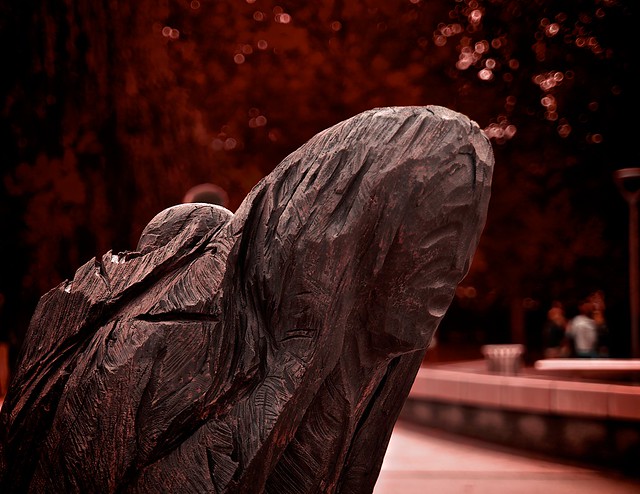Fenwick Lawson's sculpture perturbs
Fenwick Lawson’s sculpture, “Cry for Justiceâ€, is installed outdoors in the middle of a wide throughway at Durham University. Thousands of students and staff walk past it every day. The characters express despair and anguish, and when I first encountered “Cry for Justice†I was immediately struck with a deep sadness for them. I discovered from the accompanying plaque that it depicts a scene from the Vietnam war, aired on television in 1972, where a girl is covered in napalm and her family is watching her burn. Why is such a powerful and terrifying sculpture installed here?
Others have asked the same thing, and complained that the sculpture is not motivating or encouraging. One blog. quotes students saying, “‘Oh, those statues outside the library? Not only are they beautiful, but they really do inspire me to work extra hard during the daily grind at the library.’ – said no one, ever.†On the face of it, the student is correct. But they are mistaken about the reason we come to university.
While there are practical reasons for this location, peoples’ attitude toward “Cry for Justice†is a work of art unto itself. Many cries for justice are ignored by millions and noticed by few, and Fenwick Lawson’s sculpture depicts not only the cry for justice, but the plight of the cry itself.
University students have made the choice to pursue higher knowledge and a more sophisticated interaction with the world. We are highly privileged on the one hand, but we also forgo the option to turn our minds off. The scholar is not obligated to like, or even understand art, but I believe we are called to reserve our bigotry against it, and sound each piece we have time to consider against the recesses of our consciousness.
Art is meant to perturb us, and we scholars are called to allow it to do so., , ,
